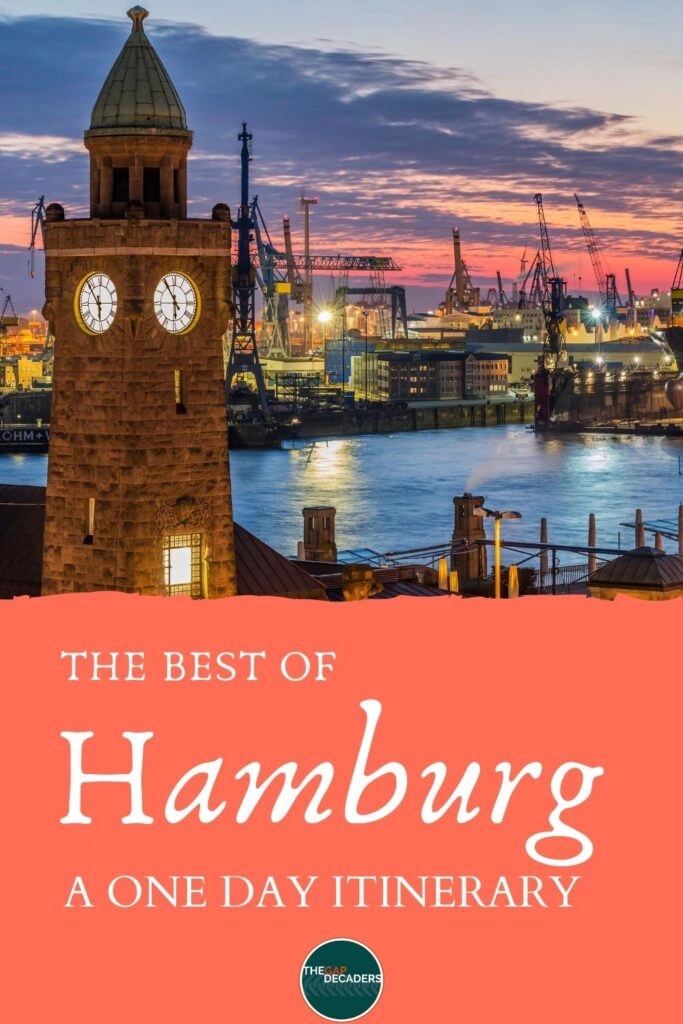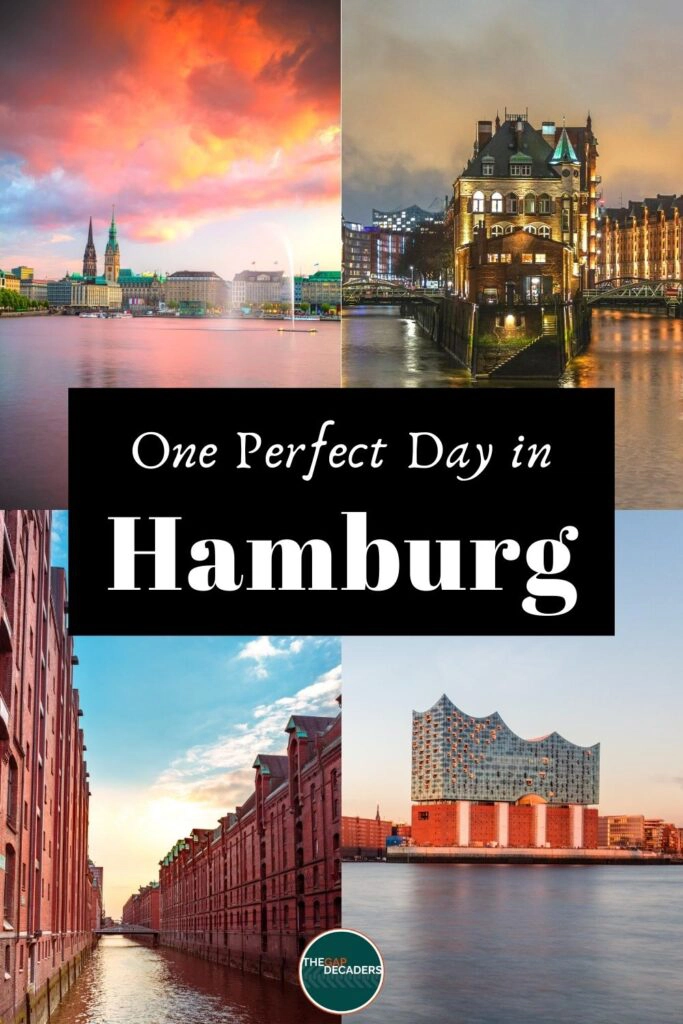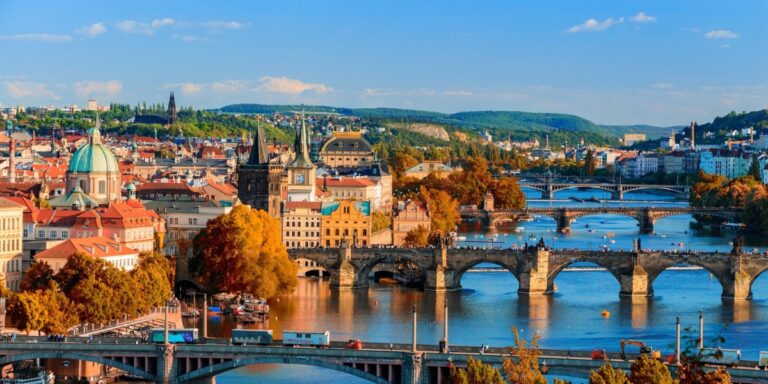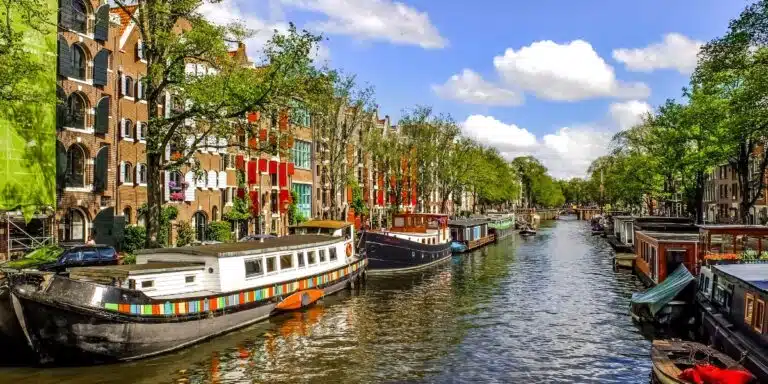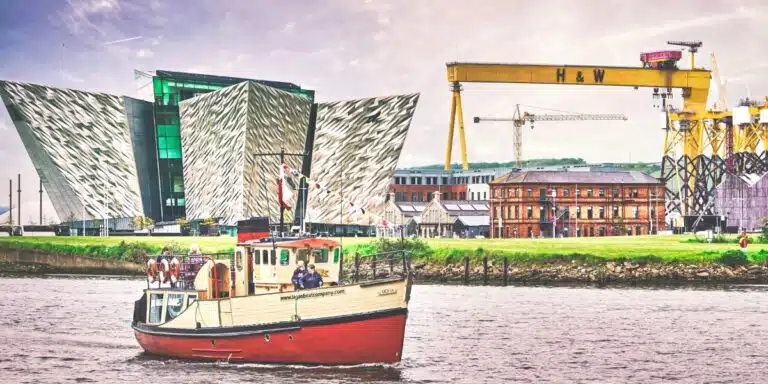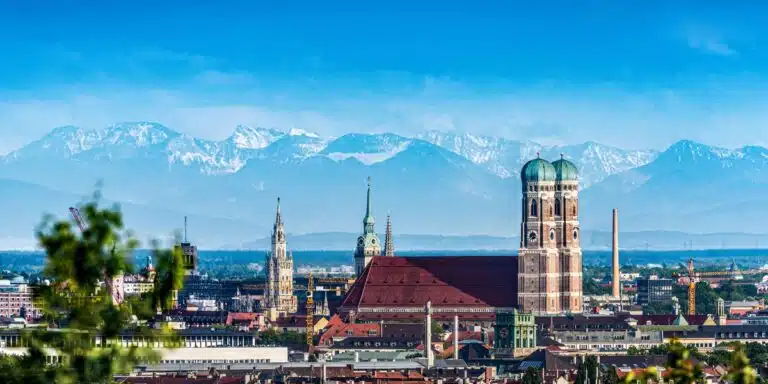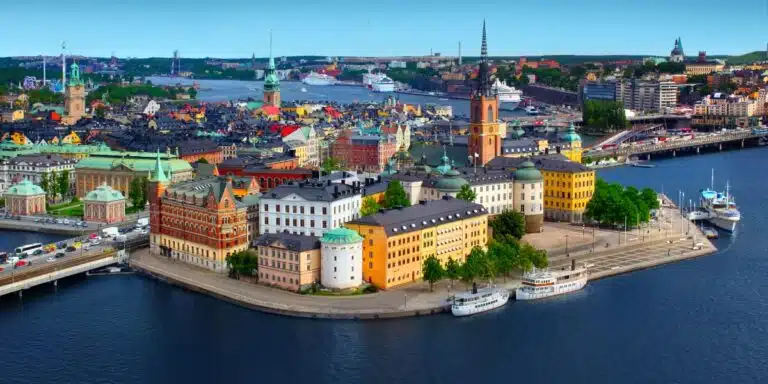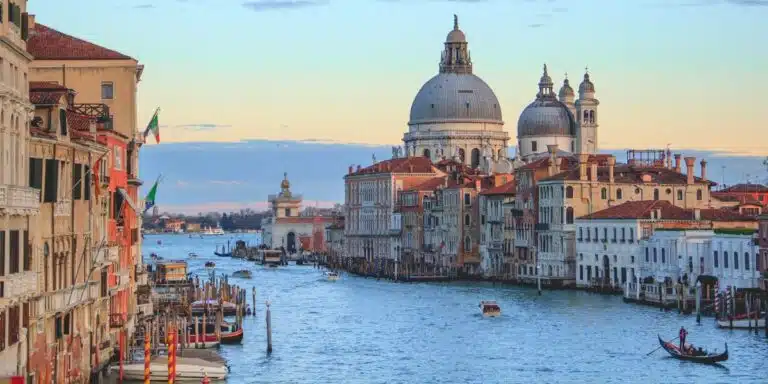This post may contain affiliate links, from which we earn an income.
What To Do in One Day in Hamburg
Hamburg is a modern and progressive port city with a fascinating history. The second city of Germany, Hamburg is criss-crossed with canals and boasts more bridges than London, Venice and Bruges combined. Explore the historic districts, edgy culture and extraordinary commercial past with our one day Hamburg itinerary.
In this Hamburg one day travel guide, you’ll find a complete itinerary of all the most important must see Hamburg attractions, with an interactive map, organised to make the best use of your time.
We also share recommendations for central places to stay, ideas about where to eat local food, and tips about how to make the most of your 24 hours in Hamburg.
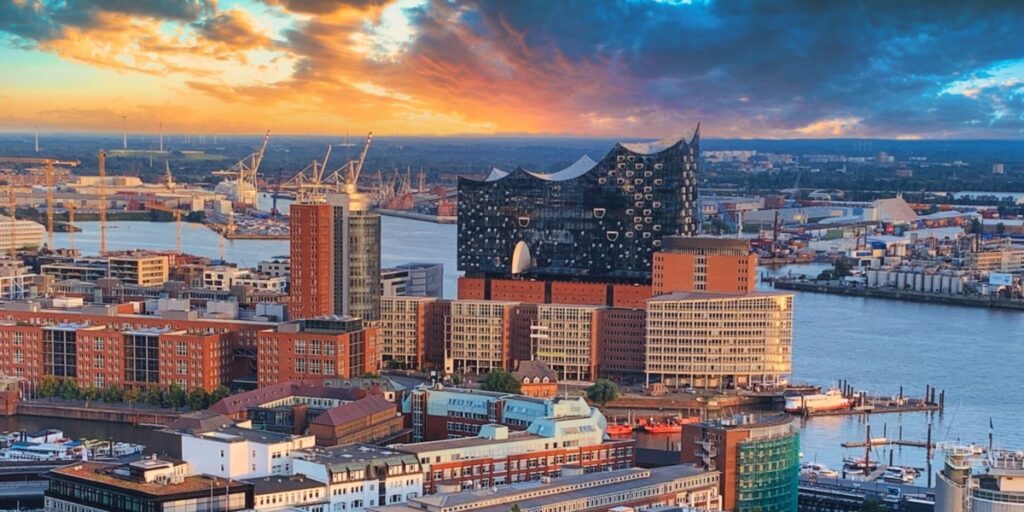
When to Visit Hamburg
The best time to plan your Hamburg trip is from May to September when northern Germany reaches balmy temperatures of 70°c.
Hamburg in summer is delightful, but it’s also the northern hemisphere’s high season, so expect accommodation and travel rates to be up there.
Early spring and late autumn can also be good times to visit, when costs will be lower. The weather may be a little more unpredictable and could also be quite cold or wet, requiring coats and boots.
Visit Hamburg in winter for Christmas markets and possibly snow, lending a typically Germanic feel to the city.
Is this your first time visiting Germany? Get all the information you need in our Germany Travel Guide, including what to pack, the best time of year to go, getting there and practical tips to help you have the best trip!
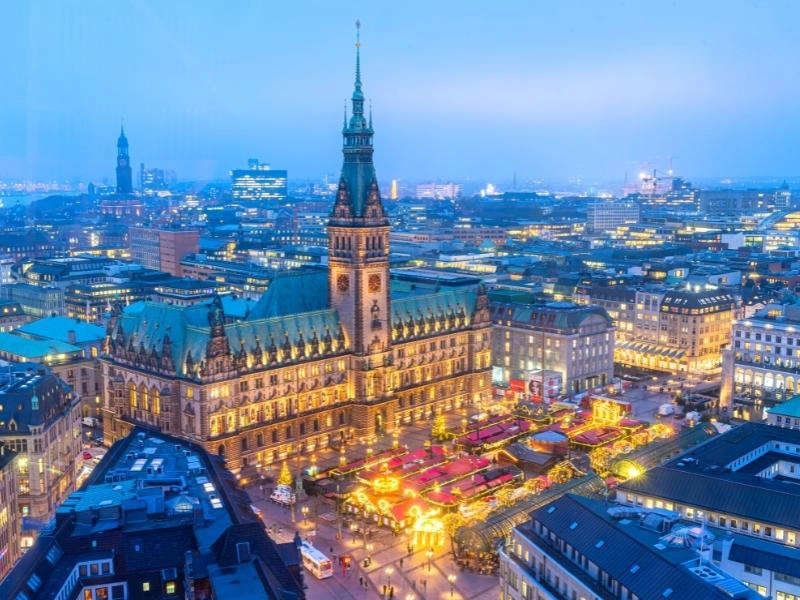
Hamburg Trip Resources
Flying
Fly into Hamburg Helmut Schmidt Airport.
Driving
Drive in from Europe or hire a car in Germany
Travel Insurance
Medical costs, delays and lost luggage
Getting to Hamburg
If you’re flying in, Hamburg Helmut Schmidt Airport is around 8.5km from the city centre. The best way to get into the city is by train, directly from the airport.
The S-Bahn line S1 takes you from the airport to Hamburg Central Station and runs every 10 minutes and takes only 25 minutes to get to the Central Train Station. You can find the S Bahn Station from both arrivals terminals, accessible by lifts and escalators. Tickets can be purchased from the booths at the station.
There are also buses available, however, they will only take you so far before you will need to transfer to take a train or the subway to get to the centre. You will need to locate bus stop C and look for either the 274 or 392 which will get you to US Olsdorf Station or the 292 which with get you either to Langenhorn Market or U Ochsenzoll.
You can also take a taxi, however, this will be the most expensive route.
RELATED POST – Five Unmissable Germany Road Trip Routes
Where to Stay in Hamburg
Luxury: Tortue Hamburg – Schöner als die Fantasie – Booking.com | Agoda
Mid-Range: The Henri Hotel – Booking.com | Agoda
Budget: Prizeotel Hamburg Hotel – Booking.com | Agoda
Hostel: Mac City Hostel – Booking.com | Agoda
Things to See & Do in Hamburg
Hamburg is a modern industrial city, the northern powerhouse of Germany due to its North Sea position on the River Elbe, in an almost landlocked country.
This easily walkable city is not always an easy visit though, with difficult history from World War II jarring against Hamburg’s development to being the culturally open and modern city it is today.
Follow our one day itinerary for an introduction to the essence of this sophisticated and culturally important city, and see Hamburg’s history and progress side by side.
If you don’t want to organise the day yourself, a guided tour or day trip is a good way to manage your Hamburg sightseeing, get a taste of the city and see all the important landmarks and things Hamburg is famous for.
Interactive Map of Your Hamburg Itinerary
How to use this map – Use your fingers (or computer mouse) to zoom in and out. Click or touch the icons to get more info about a place, and click the arrow in the box top left to open the index. To add to your own Google Maps account, click the star next to the title of the map.
Morning
Visit the Rathaus
Hamburg is a city state and is one of sixteen federal German states. The Rathaus, or town hall, is the seat of the government of Hamburg.
Constructed between 1886 and 1897, Hamburg town hall is a hulk of a building with a fantastic verdigris copper roof, ornate detailing and statues along the frontage. This large and imposing building dominates the Rathausmarkt and Hamburg town centre.
The Rathaus was constructed on 4,000 wooden poles drilled into the muddy shores of the Alster lake. There is a rich history in Hamburg of building on mud and marshland, bought to Germany by their neighbours the Dutch, who excel in this building method.
TOP TIP: Take a tour of the Rathaus and learn about Hamburg and the fake document which gave ‘free city’ status and allowed Hamburg to pay no trade taxes until 2003!
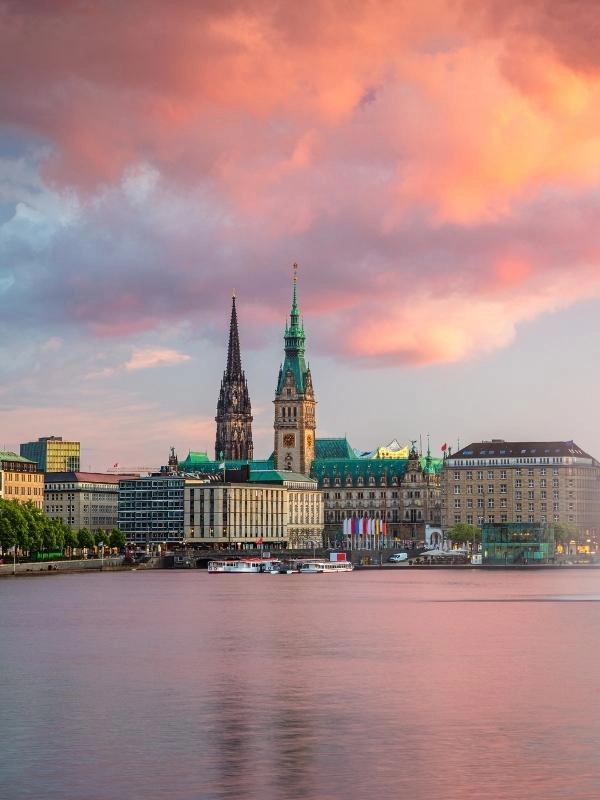
Look out for Stolperstein
Stolperstein, literally stumbling blocks, are sett-size (10x10cm) concrete cubes bearing a brass plate, inscribed with the names and life dates of victims of Nazi extermination or persecution.
Since 1992, there have been more than 70,000 such stones laid by artist Gunter Demnig, across 1,200 cities in 24 countries, in Europe and Russia.
Seeing the stones and reading the inscriptions was an incredibly moving experience, knowing they had been laid outside the last known place of residence of the individual’s choice.
They shine up from the drab (and often wet, this is Hamburg) paths and pavements of the city, telling the story of the person they commemorate and making sure they, and the genocide of six million people, is not forgotten.
One particularly poignant grouping is the stolperstein laid outside the Patriotische Gessellschaft on Trostbrucke, an organisation developed in 1765 for the good of Hamburg, epitomising working together as a society – the exact oppositie of Nazi doctrine.
Not everyone in Germany agrees with the concept of stolperstein. This excellent article in The Guardian explains why and shares more insight into the project.
Visit the Memorial of St Nikolai
Destroyed in Allied bombing raids in 1943, this Gothic church is now a museum and observation deck. It was decided after the war to not return St Nikolai to a parish church as it had been before, but to create a memorial where Hamburg could remember their dead and the atrocities of the war.
The air-raids were known as ‘Gomorrah’ because the locals felt as though fire and brimstone was raining down from the sky. Over one week, the fatal combination of using high explosive and incendiary bombs resulted in unprecedented devastation.
First ‘blockbusters’ were dropped which cracked open houses, then incendiaries containing phosphorus raised a firestorm which at times reached an altitude of 6,000 metres. The entire city turned into a volcano, a gigantic stack in which hurricane-like winds drew the hot air upwards causing low pressure on the ground, which in turn sucked in oxygen, thus acting as an accelerant.
The air-raids annihilated the city and left over 34,000 Hamburgers dead.
There are two very different modern sculptures by Edith Breckwoldt at this historic site. One predicts the struggle of Hamburgers to pull themselves back to humanity after the Allied bombings. In perfect irony, the other depicts a prisoner of war in despair.
The second sculpture, aptly called ‘The Ordeal’, is set atop a pile of bricks, representing the factory close to Hamburg where prisoners of war died in the production of bricks.
It was not realised until many years after rudimentary repairs were made to the remains of St Nikolai, that the bricks used were from the very factory where German citizens were detained and worked to death.
This is a deeply moving place where the lose-lose outcome of the war are palpable. St Nikolai really is one Hamburg must-see on your tour.
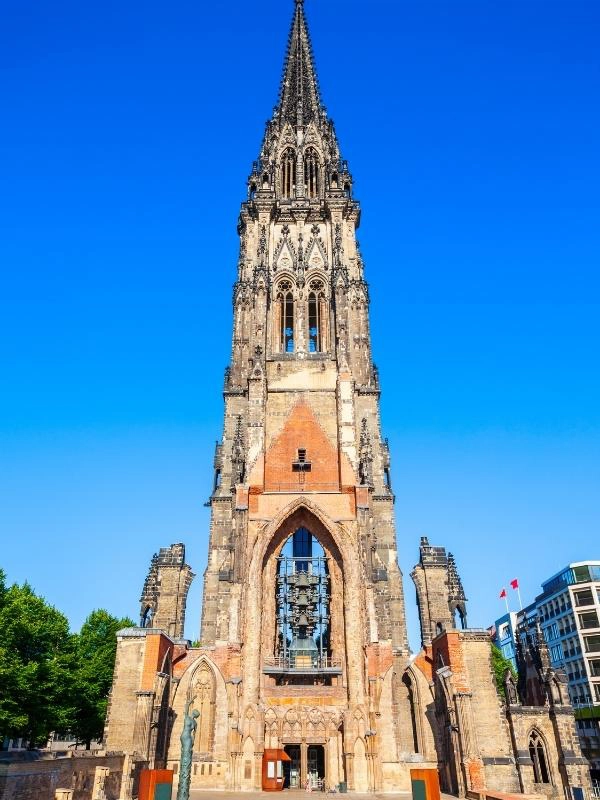
Visit Deichstrasse
A fine example of Dutch building methods can be seen on Deichstrasse, in the Altstadt (old town), where some of the oldest houses in Hamburg drunkenly lean on their neighbours.
These houses, built backing onto the Nikolaifleet canal (which was once a port) survived the great fire of 1842 and date back to the second half of the 17th century.
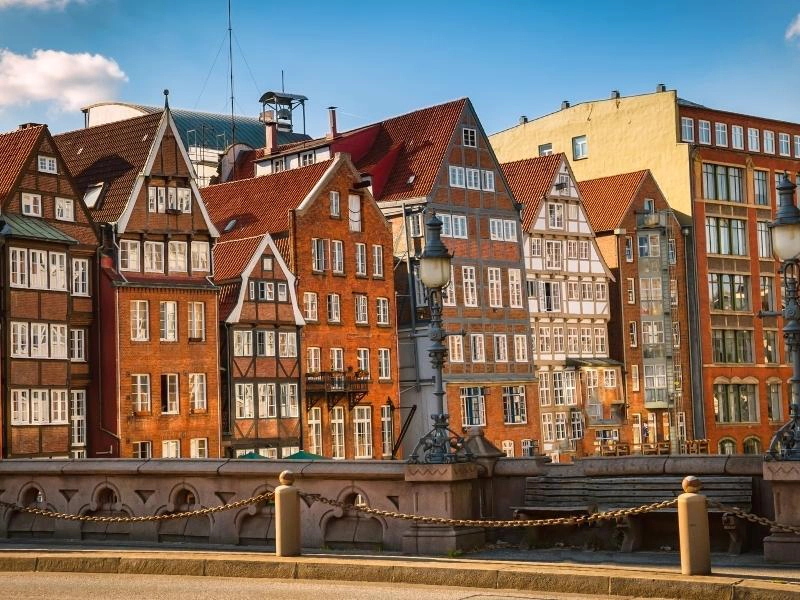
Afternoon
Wander Through the Speicherstadt & HafenCity
In 2015, Hamburg’s 19th century warehouse district (speicherstadt means city of warehouses) became a UNESCO World Heritage Site. One of Germany’s most famous landmarks, the area is a reminder of the rich Hanseatic history of the city.
The entire district is built on thick oak piles, which create a warehouse complex of over 300,000 square metres, which stored goods shipped to Hamburg from the rest of the world.
The oldest warehouse in the Speicherstadt is Kaispeicher B. At eleven storeys high, with an arresting gabled facade, it is a fitting home for the International Maritime Museum, where you’ll find artefacts such as Admiral Nelson’s letters and Ernest Shackleton’s lifeboat.
In close proximity, Europe’s first ever office district emerged to manage the growing import and export market. The Kontorhaus district can be seen between Steinstraße and Meßberg and is characterised by large red brick buildings with ornate facades, in the style of early 20th century brick expressionism.
As you wander south from here you will come to the historic dock area, which gradually became redundant due to the increase of size in ships visiting the harbour city, and is now the regenerated HafenCity.
There are some interesting modern buildings here and a nod to the past with the old cranes remaining in situ.
TOP TIP: Hamburg is now on its fourth port iteration. From the tiny Dutch build ‘drunk’ houses on Nikolaifleet to the current vast (and growing) modern container port on the Elbe – why not see them all in your 24 hours in Hamburg?
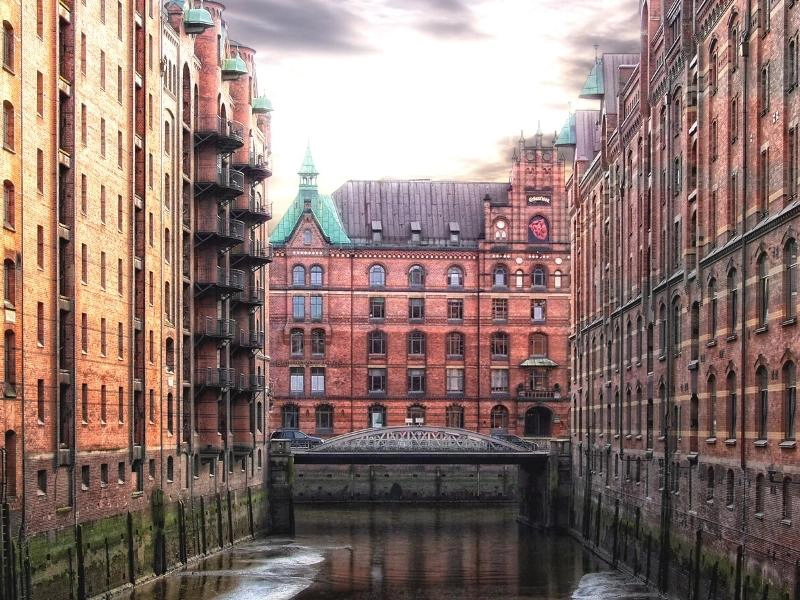
Visit the Elbphilharmonie
The Elbphilharmonie sits proudly shimmering on the banks of the Elbe river. This uber-modern landmark and concert hall has divided Hamburg, and not only because of its striking architecture, but because of the cost and complete mismanagement of its build.
Not only is Hamburg the second city of Germany, it is the second wealthiest too. Wealthy cities are such because they manage their money well, so the shock and anger at the cost of building this landmark was felt far and wide.
With an original budget of €86m, a lengthly (two years) row with the contractors, frequent changes of design and spec and a total lack of oversight, the final cost was €886m. Yep, you read that right – 10 times as much as the original, signed off, costs.
Hamburg was in uproar, being a federal state of Germany there was no money forthcoming from elsewhere, so Hamburger tax payers had to suck-up the additional costs, with a calculation of 150 years before the building pays for itself.
If you are a resident of Hamburg, you can see the special concerts played for the locals, costing only €5 a ticket.
For the rest of us, grab a free ticket and go up to the observation deck for un-rivalled views of the harbour and city skyline, whilst admiring this most expensive, and controversial, of buildings.
TOP TIP: It is totally free to enter the Elbphilharmonie and tour the building and observation decks. You are required to queue and get a ticket, but there is no requirement to pay for that ticket. Touts hang around the entrance trying to sell tickets to unsuspecting tourists, don’t get sucked in.
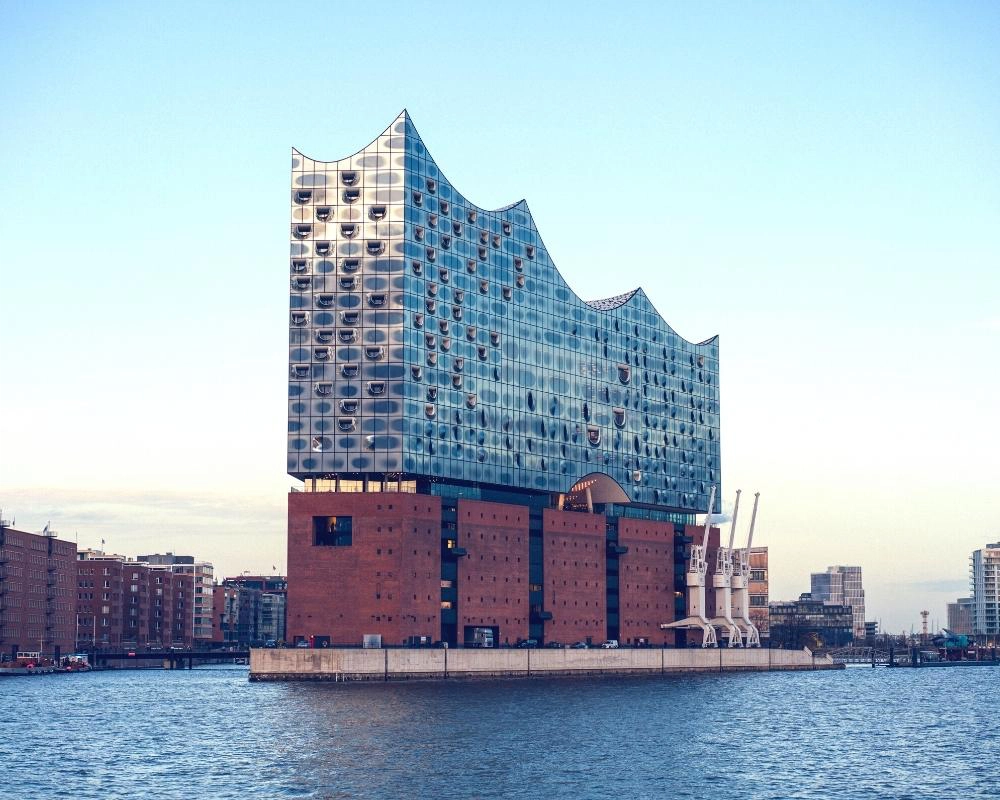
Take a Boat Trip
Hamburg is the biggest seaport in Germany and has one of the largest harbours in the world. Their maritime trading past is the bedrock on which Hamburg has grown and developed over the centuries, and no trip Hamburg is complete without a foray onto the water.
There are a number of boat trips available. You can cruise the Alster Lake on a historic steamboat or take a tour of the canals of the warehouse district. You can head out onto the Elbe river for a tour of the docks and marvel at the enormous cargo ships carrying 10,000 containers, and see the historic sailing ships in permanent dock.
You’ll have by far the best view of the Elbphilharmonie from the harbour too.
Evening
Party in St Pauli
St Pauli, just east of the centre and meandering to the Elbe, is down to earth and a bit rough around the edges, but thrums with live music, street art, energy and life.
It’s most infamous street, the Reeperbahn, with its sex shops, window displayed prostitutes and strip clubs is an eye-opener to the uninitiated. Visit the famous red light district of Hamburg at night, when the area wakes up and shows its best side.
This is also the part of Hamburg connected with The Beatles, three of whom played here in the early 60s. A guided tour is the best way to see all the important bits of this loud, gritty and occasionally kitschy district.
Where to Eat in Hamburg
Grab a Traditional Lunch
For lunch in Hamburg, one of the the top things to eat is a fischbrötchen (fish roll), you are after all in a sea city, famous for fish. The humble fischbrotchen is a simple snack, typically made with pickled herring, onion, pickles and remoulade sauce.
However, in modern day Hamburg there are many options – you can choose which fish, how it’s prepared, the type of roll and so on. Don’t pay any more or less than €5-7, you will either be ripped off, or be served a fischbrotchen of dubious quality. These are our favourite places for Hamburg’s most traditional lunch…
Goedekens Kombüse
On the doorsetp of Hamburg’s fish market, Goedeken’s Kombuse serves their fresh and delicious fish sandwiches every day but Sunday. Try one and you’ll realise why they have been voted the best fish sandwiches in the city several times!
Brücke 10
This is the place to go if you’re visiting Hamburg on Sunday – yes, they are open every day! With a fantastic view of Hamburg harbour, the small bistro Brucke 10 serves one of the best crispy fresh fish rolls (with a beer) you’ll ever try.
Fisch & Co
Fisch & Co is a small bistro in Hamburg’s altstadt. They not only serve a mean fischbrotchen, they also offer classic German dishes like currywurst (curried sausage) or labskaus, all at really reasonable prices. It’s a bonus that they’re open on Sunday’s too.
Deichgraf
Just along from the wonky houses backing onto Nikolaifleet is the Deichgraf restaurant. Serving a variety of Hamburg specialities, the restaurant is best know for its Labskaus, a tasty meat, fish and potato stew common in the region.
With a traditionally decorated restaurant and long street side tables, this is a great place to sample local produce sourced from the region.
Top Five Hamburg Travel Tips
- With the Hamburg Card, you have unlimited travel on all Hamburg public transport (HVV) including the U-Bahn, S-Bahn, bus and ferry routes, as well as more than 150 discounts at many of the city’s museums, restaurants and stores. Even if you’re visiting Hamburg in a day and don’t intend to do any museums, it’s great value for money. A one day card is valid until 6am the following morning and costs €10.50 for one adult. Get your Hamburg Card here – original ticket delivered digitally.
- For one of the less expensive things to do in Hamburg, take a tour of the docks using public ferry 62 (with your Hamburg Card) from Landungsbrücken, a great way to see the harbour although you won’t get the commentary of a paid tour.
- Sunday’s are a serious matter in Germany, with almost all shops and some restaurants remaining closed, even in tourist areas. Sunday in Hamburg city is no different, if possible pick a different day of the week to visit.
- Only visit Miniatur Wunderland if you really, really like small things. Even though it has the largest model railway in the world, this twee museum is a little …odd.
- Explore Hamburg on two wheels and sign up for the city’s public bike system, StadtRAD Hamburg. Perfect for bike-lovers and an ideal way to get about, there are 120 hire points around the city.
Other Germany Travel Ideas & Guides
More Than One Day in Hamburg?
Are you looking for a two day Hamburg itinerary, or do you have another half a day to spend in Hamburg? Why not add these attractions to your itinerary?
Planten un Blomen
Planten un Blomen is one of Europe’s top urban parks, with 47 hectares of gardens, ponds, greenhouses and botanical plantations of verdant space. Head for the old Botanical Garden, which was planted on the site of the city wall in 1821 and has glasshouses with plants from Mediterranean climes including laurels, olive trees, palms and eucalyptus.
Hamburger Kunsthalle
Visit the Hamburger Kunsthalle, one of richest art museums in Germany. With art from Rembrandt, Gauguin, Goya, Rubens, Klee, Picasso and Canaletto, there’s something here for everyone.
Old Elbe Tunnel
Walk under the Elbe, using the old Elbe Tunnel. Opened in 1911 and 24m below the river, the tunnel transformed the lives of Hamburg’s harbour workers commuting from the left to the right bank. The northern entrance is at Landungsbrucken, obvious because of it’s bright green dome. If you go on foot take your time and enjoy the Jugendstil architecture, vintage signage and maritime motifs.
Are you looking for more city itineraries? Check out these top posts…
Prague One Day Itinerary + Map, Tips & Guide
Amsterdam One Day Itinerary + Map, Tips & Guide
Belfast in A Day: Itinerary, Map & Tips
One Day Munich Itinerary + Map, Tips & Guide
Stockholm One Day Itinerary + Map, Tips & Guide
One Day in Venice – Itinerary, Map, Tips & Guide
Love it? Pin it!
